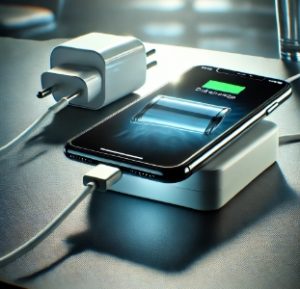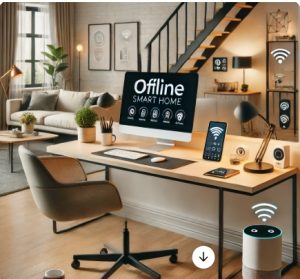For many homeowners, the idea of a smart home conjures images of Wi-Fi-connected gadgets controlled remotely through apps. While these setups offer convenience, they also come with limitations—most notably, what happens during an internet outage? If your entire system relies on the cloud, a simple disruption can render your smart home anything but smart. That’s where an offline smart home comes into play.
An offline smart home gives you local control over devices without depending on constant internet connectivity. This approach ensures your automation systems keep working, even if your Wi-Fi is down, while providing enhanced privacy and security. Let’s explore how to create an offline smart home that’s resilient, reliable, and tailored to your needs.
Why Choose an Offline Smart Home
The advantages of maintaining a smart home without relying heavily on the internet go beyond merely enduring outages. One of the most significant benefits is enhanced privacy. According to a 2023 report from the Pew Research Center, 71% of U.S. adults are worried about how the government utilizes the data it collects about them.
On July 19, 2024, Statista reported a notable rise in internet outage reports resulting from a software update by a cybersecurity company that caused a global internet outage. Emergency services recorded approximately 68 times more outage reports than the daily average, while the airline industry experienced around 50 times more outage reports.
An offline smart home provides peace of mind during connectivity issues and keeps your personal data from being sent to external servers. Keeping everything local allows you to maintain control over your home’s functionality and privacy.
Building the Core of an Offline Smart Home
To build your own offline smart home, you need to understand some basic principles. First, you need to understand how devices interact independently of the internet. Establishing an offline smart home begins with understanding how devices interact independently of the internet. You need to understand the functions of hubs such as Home Assistant, Hubitat Elevation, and OpenHAB, which act as local controllers. These hubs facilitate communication between devices through local networks, such as Zigbee or Z-Wave, without relying on cloud services.
If you’re having trouble creating your own offline smart home, consider using a Home Assistant. This popular platform is known for its ability to operate entirely offline and supports over 1,500 devices. By handling all operations locally, Home Assistant keeps your data under your control.
Getting Started with Your Setup
The initial step in establishing an offline smart home is to choose devices intended for local control. Look for gadgets marked as “cloud-optional” or those that emphasize local functionality. Popular choices include:
- Philips Hue: Smart lights that integrate seamlessly with a hub, allowing for local control.
- Aqara Sensors: Budget-friendly Zigbee-compatible sensors that operate offline.
- EufyCam 3: Security cameras featuring encrypted local storage options.
Once you’ve selected your devices, you’ll need a reliable smart hub. Hubitat Elevation is an excellent choice for beginners, offering an intuitive setup and compatibility with Zigbee, Z-Wave, and Wi-Fi devices.
After assembling your components, create a secure private network. Routers that support VLANs (Virtual Local Area Networks) are ideal for segmenting your smart devices from your main network, enhancing both security and performance.
Addressing Common Concerns
It’s a widespread misconception that offline smart homes are overly complicated for the average user. While the initial setup requires some learning, the long-term benefits significantly outweigh this initial effort. A study from Smart Home World in 2024 clearly shows that 73% of users who transitioned to local systems experienced a much higher level of satisfaction with their smart home experience.
One of the challenges is ensuring compatibility among devices. Many smart gadgets are designed to operate in cloud environments, so it’s important to research which products can function offline. Brands like Aeotec, Aqara, and Shelly are known for supporting local integrations, making them excellent choices for offline setups.
Privacy Benefits of Offline Systems
A significant advantage of an offline smart home is enhanced privacy. Cloud-based systems often collect vast amounts of data, from voice recordings to usage patterns. By contrast, locally controlled systems ensure that data stays within your home.
For example, smart cameras like the EufyCam 3 offer local storage options, allowing footage to be saved on an encrypted drive rather than a cloud server. An MIT report from 2023 indicates that more than 80% of data breaches involved data stored in the cloud
A Real-Life Offline Setup
Consider the case of Sarah and Mark, a couple from Denver who decided to transition to an offline smart home in late 2023. Using Home Assistant as their hub, they connected Philips Hue lights, Aqara motion sensors, and a Synology NAS for data storage.
When a major storm knocked out internet access in their neighborhood in early 2024, their smart home continued to function seamlessly. The lights, security system, and automation routines worked as usual, while their neighbors struggled with disconnected devices. For instance, in their review of Genie Backup Manager, they highlight the advantages of local backups over cloud subscriptions, noting that a one-time payment for the software can be more cost-effective than ongoing cloud storage fees
The Growing Demand for Local Control
The transition towards offline smart homes is not merely a niche trend. In 2023, the global smart sensors market was valued at USD 51.42 billion and is projected to grow at a compound annual growth rate (CAGR) of 19.0% from 2024 to 2030.
Manufacturers are responding by releasing more devices that prioritize local functionality. For example, Aqara recently launched a line of offline-compatible sensors, while Z-Wave continues to expand its portfolio of reliable, cloud-free options.
Building the Future of Your Smart Home
An offline smart home isn’t just about preparing for internet outages—it’s about creating a smarter, more secure living environment. By selecting devices and hubs that operate locally, you gain control over your home’s functionality and protect your privacy.
The journey to building an offline system may require effort, but the result is a home that works reliably and securely, no matter what’s happening with your internet connection. With technology evolving rapidly, now is the perfect time to make the switch.
An offline smart home offers more than just resilience during internet outages. It empowers homeowners to maintain control, enhance privacy, and reduce dependence on third-party services. While setting up such a system requires careful planning, the long-term benefits are clear.
As technology evolves, offline smart homes are poised to become the standard for secure and reliable automation. By taking control of your devices and data today, you can enjoy the peace of mind that comes with a smarter, safer home.








